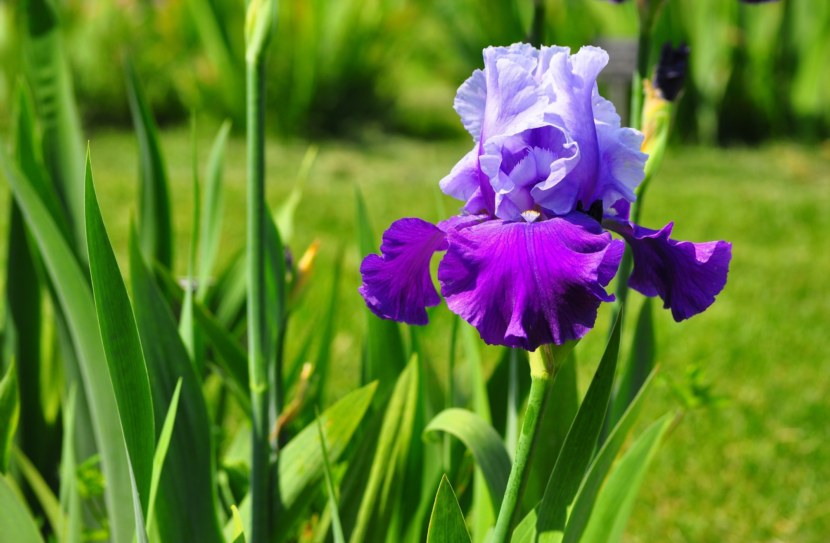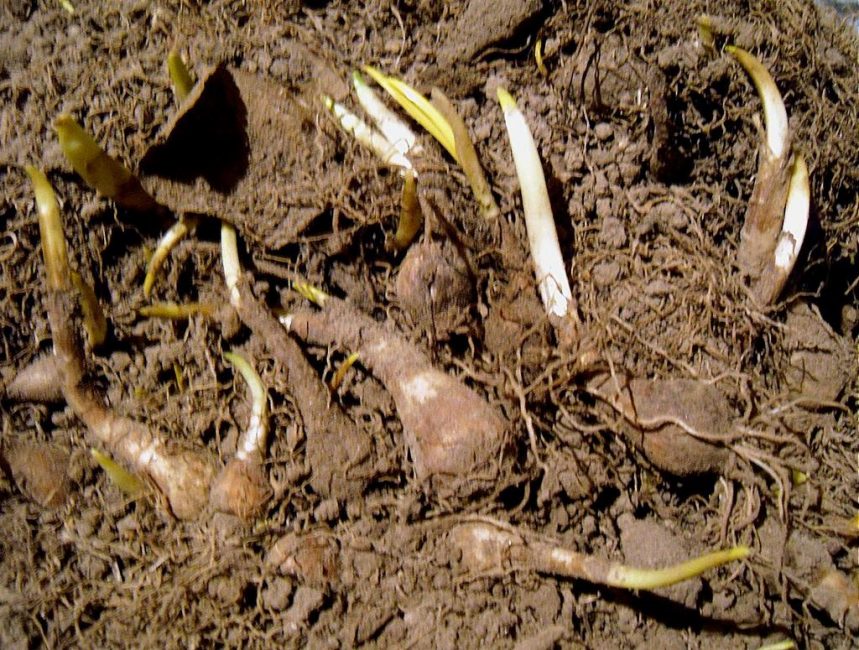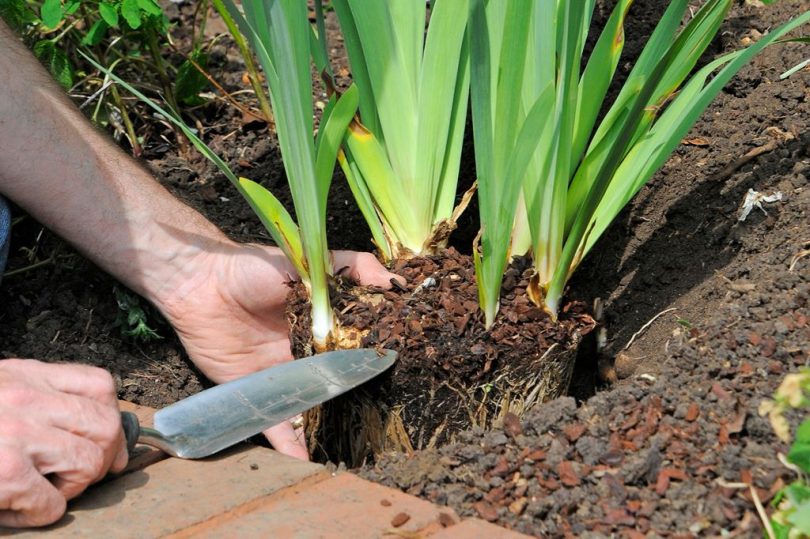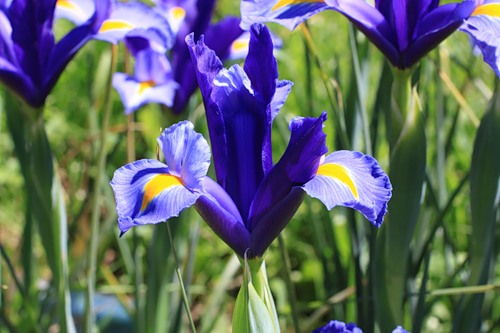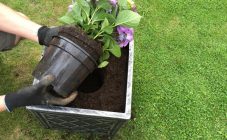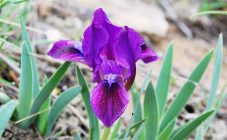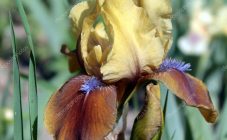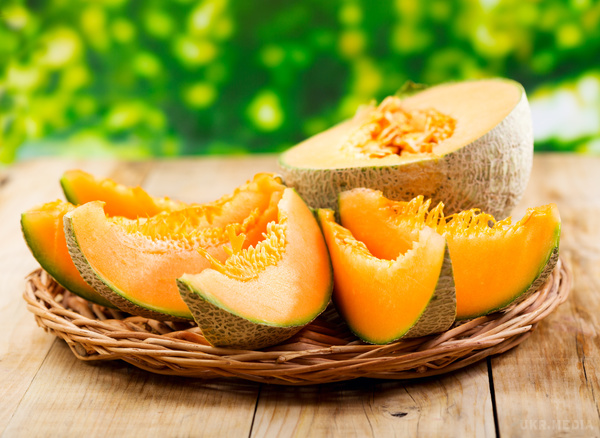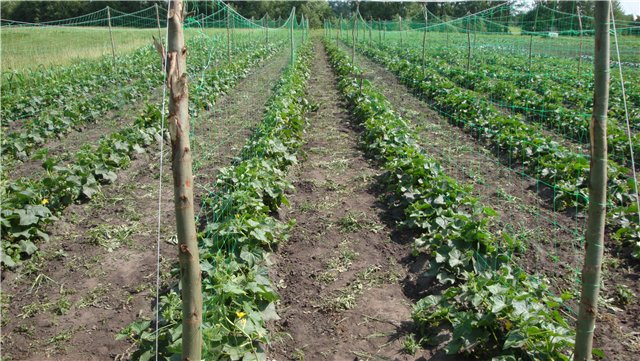Content:
Nowadays, irises are more and more popular with florists and landscape designers. Breeders presented them with many varieties that differ in flowering time, color, climatic characteristics of cultivation and other significant parameters. But the first thing those who want to buy a spectacular flower for their garden pay attention to is the color scheme and the duration of flowering. The planting of irises in the summer in the ground is done with the aim that by the fall or next season you can admire the colorful flowers on your own plot.
When is it better to plant irises
The timing of planting irises directly depends on what species they belong to. Germanic plants can be planted both in spring and autumn and even in summer, but those growers who choose autumn planting achieve the best results. Japanese varieties are not particularly frost-resistant, so they should be planted closer to the end of summer. Siberian iris is considered one of the most cold-resistant, so it can be planted even at the end of September, and in warm climates even in October.
In summer, it is preferable to plant also a reticulated view of a majestic flower. Juno is dug out at the end of the first summer month and stored until early September in a dry and dark place, after which they are planted in a flower bed. After the foliage turns yellow, the bulbs of xyphyum are dug up and sent to the refrigerator for winter storage, and with the onset of spring they are sent to the garden.
Summer landing has a significant advantage over the rest. Before the onset of cold weather, the bulbs have time to start laying the buds and take root well, thanks to which they will please you with a riot of colors by the next season, the risk of freezing in winter is minimized. Planting work in the summer begins in July. At the same time, if dry weather is established, the seedlings should be regularly watered. Water stagnation in the garden should not be allowed, but it should be moist all the time.
Preparation of planting material
Before planting any irises in the summer, you need to select high-quality planting material. It must meet the following requirements:
- the tuber must have at least one fully formed link;
- in no case should there be signs of rot or the presence of other diseases on the rhizome;
- the root should be dense and elastic;
- light tubers are uniformly colored, they have tubercles, which later serve as primordia for the formation of roots.
It is recommended to dry the newly dug planting material within one day and cut the length of the leaves by a third. After that, the roots are cut to 10 cm in length, the damaged ones are removed altogether. The cut sites are treated with a solution of potassium permanganate.
Preparing the landing site
The basic rule for choosing a place for planting a favorite flower is to provide a sufficient amount of light and nutrition. Rhizome iris varieties prefer areas with good lighting for growing, which will ensure long and lasting flowering. The roots will be able to spread freely if the distance between neighboring plants is at the level of half a meter. It is preferable to choose the soil fat, loose, neutral in acidity, rich in nutrients.Before the irises are planted, compost and potassium-phosphorus fertilizers are applied.
The moisture requirements for each variety are individual. It is preferable to cultivate the bearded iris on the slopes to provide it with a good outflow of rain or melt water. Swamp or Siberian species, on the contrary, prefer places located near water bodies and light partial shade.
A flowerbed intended for growing irises should preferably be dug up in advance, treated with fungicidal preparations that prevent the appearance of insect pests, as well as fungal diseases. It is advisable to apply herbicides in the selected area, so that you do not need to fight weeds again. If the earth has high acidity, then ash, chalk and lime are added to it.
How to properly plant irises in summer
Iris are planted in holes or grooves, the depth of which is 20 cm. Up to half of them are covered with river sand. The distance between the holes or grooves is left about half a meter so that the plants have the opportunity to grow. A distance of 10 cm is maintained between the roots themselves.
The rhizomes are laid out in such a way that the roots are spread out on the sides, and the flower itself is in an upright position. Next, the seedling is covered with a thin layer of earth so that its top protrudes above the soil surface. Watering irises is carried out very carefully to prevent soil erosion. If the weather is dry and hot, then irrigation is carried out daily for a week.
Further care
The easiest care for German iris varieties. Even inexperienced beginners can grow them, for whom the plant easily forgives all errors in agricultural technology. If flowers are grown in hot climates, then you should think in advance how to protect them from the heat and provide partial shading, while choosing the most successful place.
Irises are moisture-loving plants, but they do not tolerate stagnant water and waterlogging very badly. If the soil on the site is wet, then you need to take care of good drainage. Watering is done exclusively at the root. In the summer season, the procedure is carried out regularly to prevent the top layer of the soil from drying out. At the end of summer or at the beginning of autumn, watering should be stopped altogether so that root rot does not develop. If it is rainy and damp in summer, then you should not additionally irrigate the flower beds. In areas where the soil tends to quickly lose moisture, the irrigation procedure is carried out in the evening, so that the plants have time to use the incoming water to the maximum.
Inexperienced growers may be inclined to believe that garden iris is grown without additional fertilizing at all. Practice shows that it is advisable to apply fertilizers starting from the second year of life. Proper care provides that during the growing season 3 additional fertilizing should be carried out. The first time is in early spring, nitrogen-containing preparations and ash are introduced so that the plants actively increase the green mass. After a couple of weeks, it is advisable to apply a complex mineral fertilizer. During flowering, irises need potassium and phosphorus.
After the end of the flowering period, all peduncles must be removed. In August, it is worth trimming the foliage by a third of the length. The same procedure is carried out when transplanting irises.
In autumn, planted irises begin to prepare for the upcoming wintering. To do this, the number of watering is minimized or stopped altogether. Leaves with signs of diseases or simply dried out are completely cut off. Bare roots are covered with sand. For the subsequent mulching of the soil, peat is used, which is poured in a layer of 10 cm.In regions with severe and little snowy winters, plants are covered with spruce branches. This is especially true for hybrid varieties that require special protection.
Tips from experienced florists
Sometimes novice flower growers wonder why irises planted in summer delay flowering, and few leaves are formed in the fan. Experienced comrades say that the reason for this may be a possible rotting of the roots or a violation of elementary rules of agricultural technology.
According to experienced summer residents, the reasons for the lack of flowering of irises are often deepened planting of tubers, insufficient light, freezing of the flower bud in winter, or too strong overgrowth of bushes. Solving these problems is not that difficult.
Anyone can grow irises in their own flowerbed, because this flower will forgive an inexperienced grower for minor flaws and will delight you with a beautiful long flowering. A variety of colors and varieties, adaptability to different climatic conditions contribute to the fact that an increasing number of summer residents decorate their plots with irises. With minimal requirements for care and cultivation, they bring tremendous pleasure to the owners and their guests, delighting with unusual flowers.
